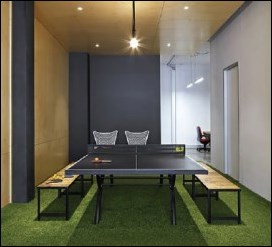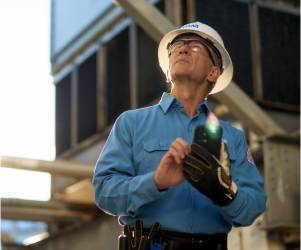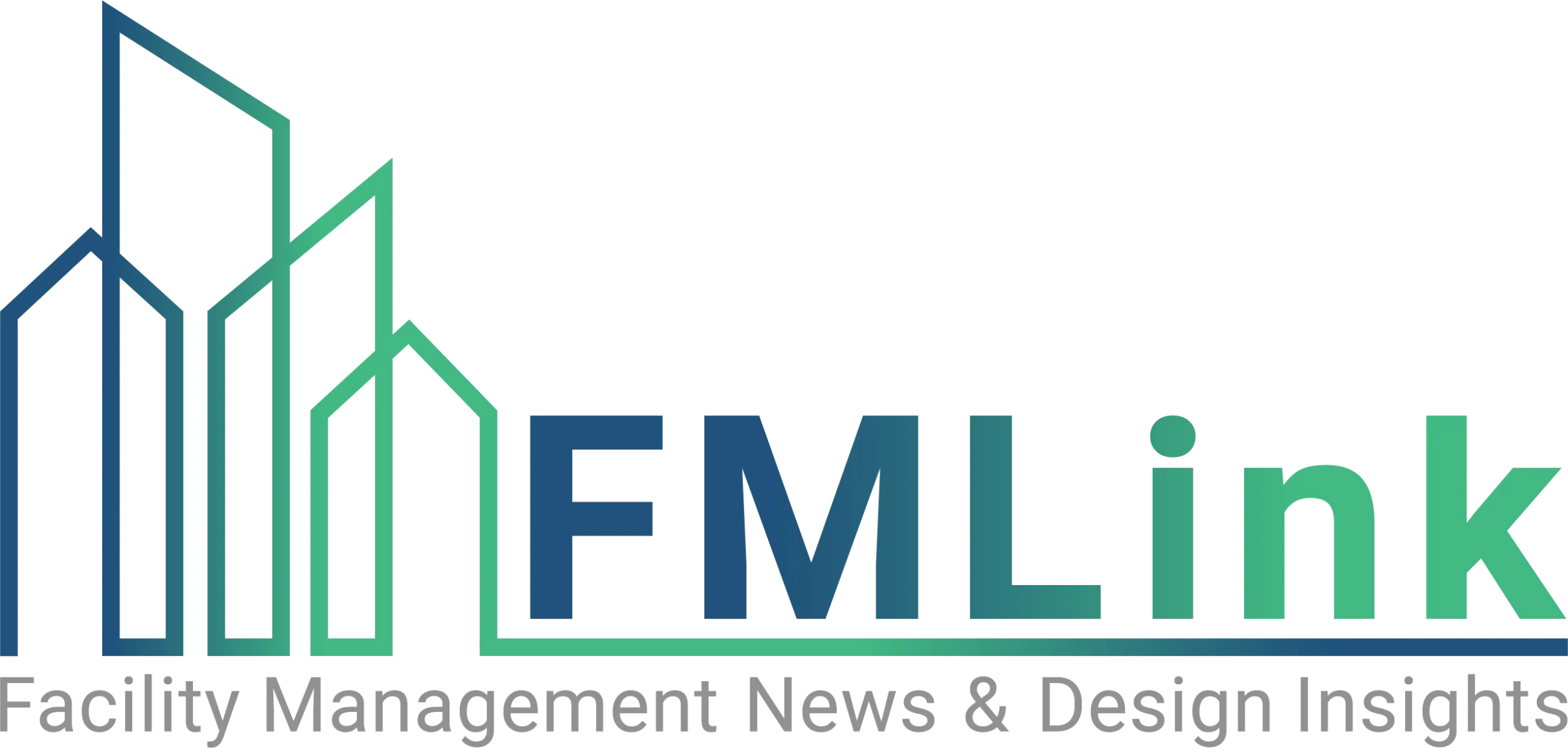The workplace is often portrayed as the root cause of employee discomfort, and is thought to induce backaches, weight gain and eye strain. While many modern-day offices do foster employee injuries and ailments, it is possible for workers to leave their companies each day healthier than when they arrived. With careful planning and an understanding of the relevant research, facility managers can create healthful workplaces that minimize adverse health risks and the associated costs. Thoughtful design considerations, flexible user-controlled arrangements and a forward-thinking company culture are just a few elements that contribute to employee wellbeing within the physical workplace.
Workplace evolution
Acknowledging the workplace’s potential to be safe and healthy is a recent concept, which began with section five of the Occupational Safety and Health Act of 1970. Health issues pertaining to the workplace environment are ever-evolving, but sitting is currently the most-discussed challenge that today’s companies face. At a time when over one-third of Americans are considered overweight and obese (Centers for Disease Control and Prevention), sitting for a greater part of the work day is certainly not healthful or beneficial.
Sitting for long durations of time is a relatively new behavior with which humans fill the majority of their day. For the past 400,000 years, humans have primarily been walking, sleeping, leaning, running or squatting, states Eric Jensen, author of “Teaching with the Brain in Mind.” The action of sitting only recently became a common behavior, following the invention of the chair. Over the last 500 generations, the time that people spend sitting has increased, which has changed the way that the human body naturally moves. While formerly very active, people are now significantly more sedentary. Due to improvements in modern technology and communication, sitting has become the most convenient and natural position for humans to accomplish their work tasks.
The concept of work and, by extension, where it should occur, has recently undergone drastic change and redefinition. Only a century ago, the worldwide predominant industry was farming, which necessitated hard manual labor. Tasks like tending to crops and livestock created a demand for physical work. Thus, people spent most of their time moving and almost none sitting down. However, the Industrial Revolution prompted rapid development in the banking, rail, insurance and oil industries, each of which opened centralized facilities to conduct business and to process orders. Several decades later, technology became more efficient, and several lines of work began to concentrate on deep problem solving and educated industries of focus. This trend led to employees who became labeled as knowledge workers. The invention and subsequent widespread use of computers directly influenced workplace culture: companies began using dictated work stations and conforming standard hours.
Human beings are tethered to technology because it permits immediate communication and quick answers; our heavy reliance on technology is evidenced by a steady rise in smart phone sales each year. The challenge with modern-day technology, however, is that it limits body movement, as many tasks that used to require a series of actions can now be completed digitally while sitting. Individuals can spend more than 75 percent of their work day sitting, which allows them fewer opportunities for healthy movement (McCrady and Levine, 2009).
Because we are so anchored to technology, the whole spectrum of behaviors that our bodies are able to execute becomes severely limited. Specifically, sitting in a stagnant state for the majority of the work day slows metabolism. According to TIME Magazine, “Since more jobs require people to sit at a desk, Americans are burning 120 to 140 less calories a day than they did 50 years ago.” This explains, at least partially, the spike in obesity that has occurred within the past century.
Health risks
“Sitting is the new smoking” is a newly popular tagline that cites actual research directly affecting office workers. The American Journal of Epidemiology recently published a study that exposed the dangerous consequences of sitting for long stretches of time. The study revealed that those who sit for over six hours each day are at least 18 percent more likely to die from diabetes, heart disease and obesity than are those who sit for less than three hours each day.

Sedentary human behaviors cause human muscles to burn less fat, which in turn causes blood to flow at a slower rate. This allows fatty acids to easily clog the heart. Additionally, if an individual’s family has a medical history of colon, breast or endometrial cancer, sitting can lead to a greater risk of cancer in that individual. Although the specific mechanisms through which this occurs remain unknown, one theory suggests that regular movement boosts natural antioxidants which kill off cell-damaging cancer agents.
Those at risk for osteoporosis should be aware that sitting can accelerate the development of this disease as well. This is because weight-bearing activities like walking and running stimulate bones in the lower body to grow thicker and stronger. A lack of such activity, in addition to prolonged immobility, can impede the body’s ability to grow healthy bones. The typical office worker has been shown to have more musculoskeletal problems than a worker in any other industry sector. This can be explained by the amount of time that office workers spend sitting.
Not surprisingly, this absence of physical activity amongst employees can dramatically affect the bottom lines of the companies for whom they work. According to Cornell University, the typical employer loses an average of US$2,598 per employee a year due to health-related physical or mental stress. Back pain is a particularly costly ailment: employers spend about US$7.4 billion on back-related issues a year for workers aged 40 to 65. Poor quality office chairs and lack of ergonomic education both contribute to compromised employee health.
Creating healthy environments
It is in companies’ best interest to prevent workplace ailments. Healthy employees require less money to be spent on insurance. As health insurance rates continue to rise approximately 5 to 10 percent a year, wellness should be a top priority for a company’s C-suite. So, what can facility managers do to enforce a healthful work environment and to prevent unnecessary ailment-related expenses?
Arranging a facility in a way that encourages employees to walk around can eliminate some of these hidden costs. Exercise and active movement directly support employee productivity and self-satisfaction. When humans walk around a space, the soft discs between their vertebrae expand and contract like sponges, soaking up fresh blood and nutrients.
Gretchen Reynolds, author of “The First 20 Minutes,” stresses the importance of physical activity. She writes that even 20 minutes of mobility can reduce an individual’s risk of disease, thus contributing to a prolonged life. In her book, Reynolds proposes a plan for physical activity that is tailored to office workers. She does not call for hours of exercise, but rather suggests short 20-minute walks. In addition to health benefits, such regular movement also confers increases in brain activity.
The scans completed by Dr. Chuck Hillman in Figure 1 verify the benefits of short walks: the scan following movement shows significantly more brain activity than does the scan following immobility. This spike in brain activity can stimulate better ideas and can result in more productive employees.
Walking, therefore, can be the behavioral answer to reducing risks of obesity, cancer and diseases. The design of a facility should encourage walking without annoying or inconveniencing employees.

Consider the following facility design ideas to increase employee health:
- Height-adjustable surfaces. Height-adjustable desks allow employees to modify their working conditions based on how their bodies feel. These desks are especially beneficial to employees who are unable to easily move their technology because of immobile desktop computers or a need for constant access to company files. Height-adjustable desks give employees the option to sit or stand. Standing keeps blood flow moving throughout the body at a higher ratio than sitting. At the recent interior design industry yearly showcase, NeoCon, sit-to-stand desks could be found throughout the Merchandise Mart. Because there are now so many products to choose from, creating competition, the cost of height-adjustable desks has decreased significantly.
- Walking desks. Tread desks, or walking desks, feature a work surface mounted atop a treadmill. They allow employees to exercise without having to bear extreme outdoor conditions. Webinars, phone calls and email follow-ups can all be completed on a tread desk, allowing employees to feel a sense of multitasking satisfaction. Furthermore, employees may not even break a sweat if they keep their miles per hour range between 1.5 and 2.5. Tread desks are especially beneficial for offices located in aggressive areas of town where outdoor exercise is a safety concern.
- Defined walking paths. A distinct floor plan between office spaces can direct inter-facility movement and can also double as a walking path. Employees who choose to walk within the company’s boundaries during their lunch hour will be able to track how many steps they have taken with the help of a walking path legend. A recent study conducted by the George Washington University School of Public Health and Health Services revealed that subjects who take a few strolls throughout the day have better control of their blood sugar than those who opt for one long, sustained walk. Regular daily strolls, therefore, can enable employees to more effectively control their food cravings.
- Unconventional meeting rooms. Meetings are traditionally conducted in rooms with a desk-height conference table. However, if they rethink the way their meetings are led, companies can give their employees a choice of where in the space they would like to participate. Providing several standing-height tables in large board rooms, for example, gives occupants the freedom to select a spot and to move around the space. Some companies even lead their meetings by walking around their facility rather than sitting. This approach is most successful with teams of 2 to 6 individuals. Figure 2 showcases a meeting room at Reactive Media. The company uses a ping pong table to keep employees active and focused.
- Centralized trash and recycling. By removing personal trash and recycle bins from each employee’s desk and instead using centralized compartments, building occupants are subtly forced to break away from their personal space. Centralized trash and recycling also helps eliminate odors caused by meal disposal in personal bins.
- Centralized amenities. Establishing distinct zones for break rooms, mail rooms and areas of relaxation encourages employees to get out of their desks. Additionally, placing printers and mail supplies within 50 feet of employee desks also facilitates inter-office movement, if only for a brief moment.
- Exposed stairwells. Stairwells placed in the central core of a building are more likely to be used than egress stairwells located around the perimeter. Additionally, stairwells that break through multiple floors allow employees to see the people in their surrounding spaces. Instead of designing spaces to embellish elevators, architects and interior designers are beginning to focus on connecting floors aesthetically through exposed stairwells.
- Flexible interiors. Laptop computers allow employees to choose which zones they would like to work in, and also enable them to break away from assigned desk spaces. By inserting bar-height tables into office environments, companies can give their employees the opportunity to stand and work. Installing white boards and other user-manipulative materials permits employees to brainstorm while standing.
- Multipurpose open space. Multiuse rooms are helpful not only for elementary education facilities, but also for large companies and corporations. These spaces are flexible, and can thus host a range of different activities; onsite yoga lessons, for example, could occur in a facility’s multipurpose open space. If a fitness class is conveniently located and easily accessible, employee participation will increase.
- Daylighting applications. Evidence-based design encourages access to views of the outdoors because they confer health benefits for occupants’ mental psyches. This concept can also be applied to workplace design, as both individual and collaborative spaces should provide views to the natural environment. Flexible workspaces near windows allow employees to choose where they want to work, and also limit the amount of sitting that occurs during one day.
Well-programmed buildings focused on employee health can reduce the amount of time that occupants spend sitting. Companies with offices that encourage exercise and physical activity can better stimulate their employees, while simultaneously decreasing their risks for disease and cancer. Improved levels of employee health decreases health insurance spending, which means more profit overall.





